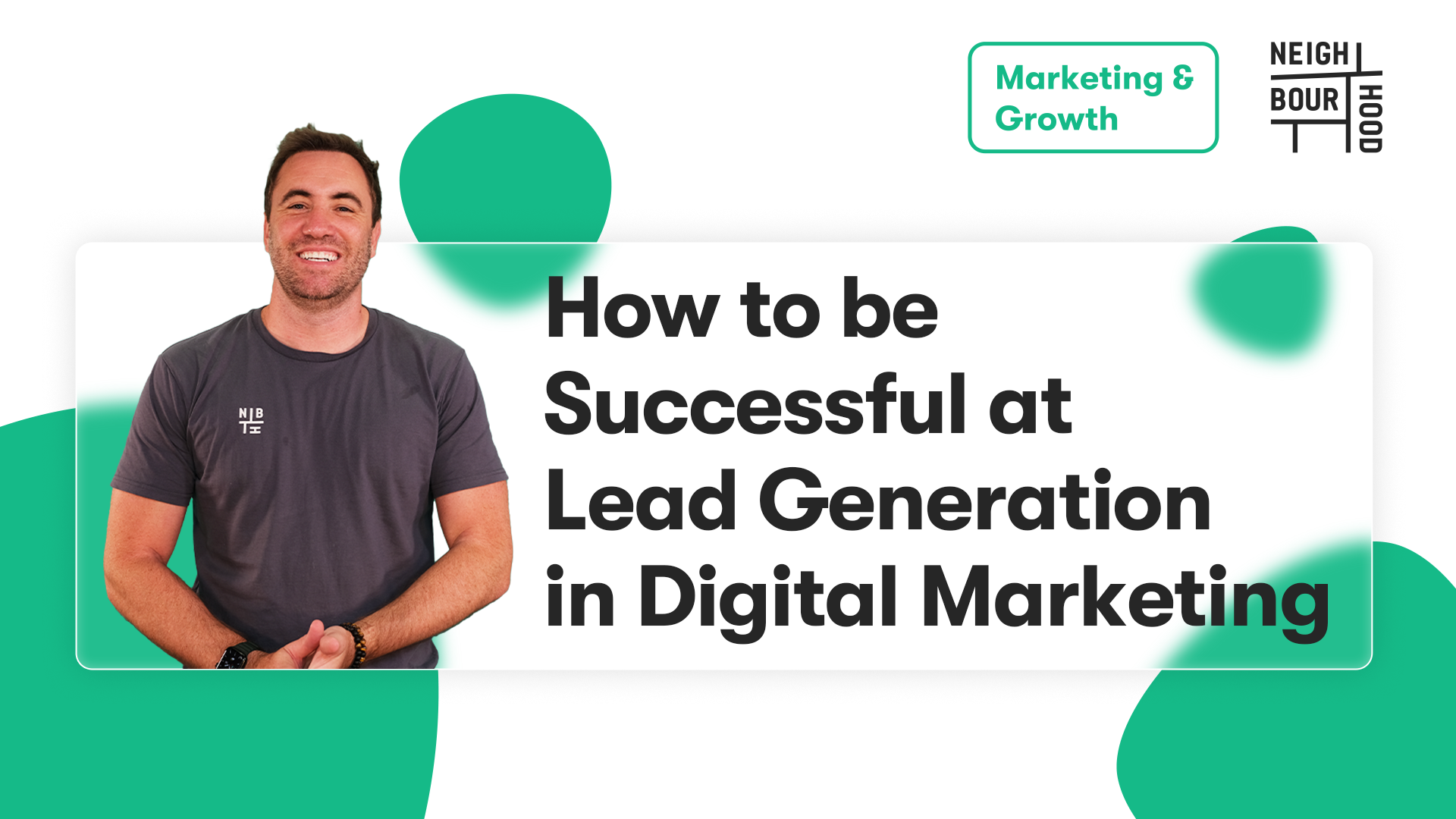Lead generation is a bit like... fishing.
The days leading up to it, you do all the preparation for a successful day out on the water. You check the weather forecast, get the fishing report for the best location to go, buy the bait, get your gear and load the esky's in the car - all to wake up before the crack of dawn to spend a day at sea to get a ‘fish on’. There’s a lot of preparation that goes into it before you even get to the water and cast your bait. But all the preparation isn’t for nothing, as the whole point of fishing is to catch a fish right? Well my friends, while this analogy is pretty terrible, it also paints the perfect picture into what lead generation is.
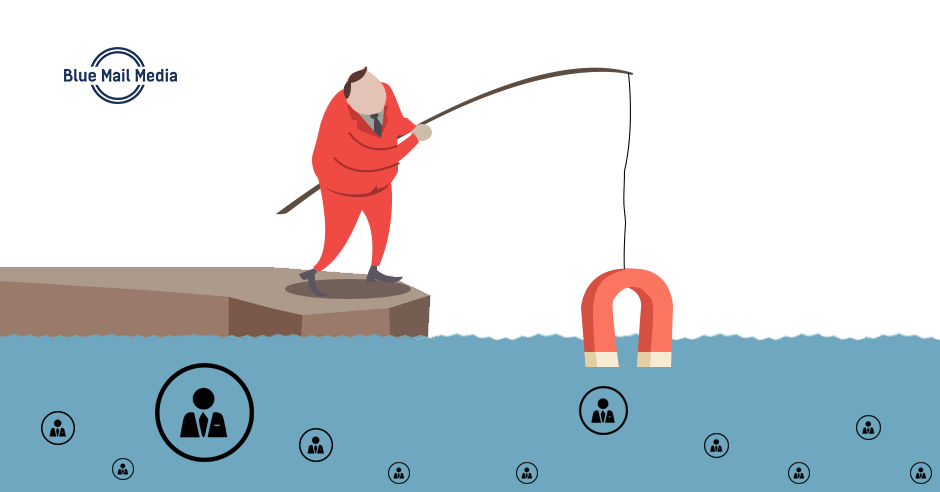
The ultimate goal of all businesses is to increase revenue. And how do you do that? Well, (not so dissimilar to fishing), you need to firstly prepare the perfect environment suited to your potential prospects needs, all to attract more website visitors to your site, to then hopefully convert them into leads and then convert those leads into customers. And more leads equals sales.
Easy peasy lemon squeezy.
Well… actually no. Not quite so easy peasy lemon squeezy. In fact, HubSpot research points out that 70% of the companies that failed to reach their revenue goals were generating fewer than 100 leads per month. Meanwhile, only 5% of these companies were generating over 2,500 leads per month.
It’s clear that lead generation can be a bit difficult to get it right. In saying that, it is also an element you can’t afford to come home from a day at sea, empty handed. With that being said, it might be important for you to know how to generate leads with digital marketing.
Good thinking batman, let’s take a look.
What is a Lead?
You’ve cast your line and are patiently waiting for a catch. Then, suddenly, you feel a couple of bites on the line. You know you’re in the right place, and closer to getting yourself a catch. Getting a lead in business, is pretty much the same. In more technical terms:
“A lead is any person who indicates an interest in a company’s product or service in some way, shape, or form.”
It can be narrowed down to someone who has indicated an interest in your product or service by providing personal information that can then be used to contact them. Be sure you have been given their contact details, before getting too excited. If you don’t have someone's contact information how the hell are you supposed to contact them? No one wants to be a stage-5 clinger, so if you’re trying to contact someone and don’t know HOW to contact them, it’s probably a sign you shouldn’t…
What is Lead Generation?
Lead generation, is the process of, you guessed it - generating leads! Ultimately it's the act of attracting and converting strangers into someone who has indicated an interest in your company’s product or service. But how do you make sure strangers are attracted to the bait in the first place?
Just like you need bait to catch a fish, lead generation is about creating content that will attract prospective customers into handing over their contact information. This means the lead magnets you create, need to be enticing to the target market in the first place. Lead magnets can take place in the form of, downloading a template, signing up to a mailing list to receive 10% off their first order, or using the chatbot for help, all in exchange for their contact information. Once they’ve taken the bait (in our case, submitted their contact information), it's game on.
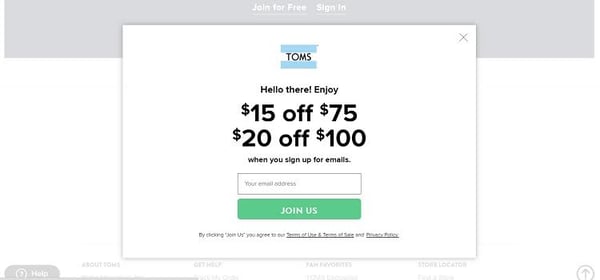
As a customer, you can’t get suss or annoyed if you are contacted later by someone from the company pitching you their product or service, because you pretty much signed your life away when you ticked that terms and conditions box (probably should get around to actually read one of those one day….). But from a business standpoint, the content you then send to your leads should relate to them and so it will continue to engage with you, or buy your product.
Lead generation works best when the prospect has made the first move, and shown interest in you! So reaching out to them won't be annoying or pushy, and because they’ve already engaged with you once, and the next time you reach out, it should actually be of interest to them the second time around. So keep the line in just a little bit longer, the fish might decide your bait is what they want after all.
What Is Lead Generation in Digital Marketing?
Lead generation in digital marketing is the process of generating leads using actual digital marketing techniques. None of this ‘fingers crossed and hoping for the best’ business over here. Unfortunately, the law of attraction isn't going to get it when it comes to helping your lead generation efforts in today’s digital climate.
In fact, It’s often done best within the Inbound Marketing methodology framework:
- Attract - people to your website.
- Engage those visitors, turn them into leads, then convert them into paying customers.
- Delight those paying customers.
Following this framework, lead generation occurs in the second part of the attract-engage-delight process, where you convert website visitors into email subscribers. I mean you don’t just start selling your product to people when they don’t even know what it is you sell? Give them a bit of time to explore who you are and what you do - as I said, it all starts with setting up the perfect environment to get them to provide contact information in the first place. Once you get a little tug on the line, it's game on.
It can also be pretty tough to get right on the first go, so don’t be too hard on yourself. There’s nothing worse than putting all the time and effort into planning and preparing for the perfect day to go fishing to not even get a single bite. But if this is something that's happening to you then perhaps you’ve been misreading the environment or something isn’t quite desirable for your prospects (or fish) to want to take the first bite.
Well, good thing you’ve come to the right place. Just so you aren’t stuck scratching your head wondering why, we’re here to give you the lowdown on how to generate leads with your digital marketing efforts and mistakes you should avoid.
How To Generate Leads With Digital Marketing
Generating leads with digital marketing is a simple three-step process:
- Create a lead magnet.
- Create a landing page for that lead magnet.
- Drive traffic to that landing page.
So let’s take a closer look at each of the steps…
#1 Create a Lead Magnet
A lead magnet is something that you offer for free in exchange for a visitor’s email address.
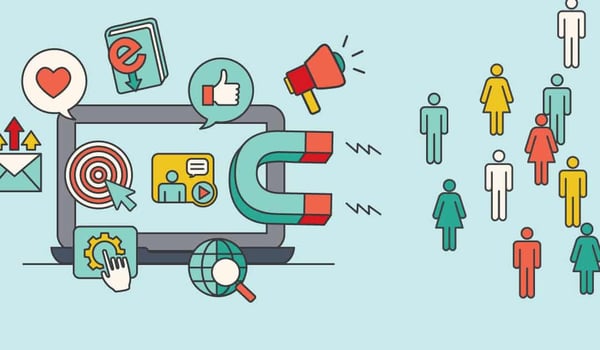
A few examples that we use here at Neighbourhood include:
- Ebook’s
- An email course
- A video guide
- A video course
- Templates
What’s important is that the lead magnet provides a convincing and quality solution to a problem that is a pain point for your buyer personas.
#2 Create a Landing Page as a Lead Magnet
Landing pages are referred to as sales pages or a lead magnet, designed with the purpose of attracting leads in the first place, providing value for them to hand over their details.
Landing pages need to be designed appropriately to your buyer personas needs, and provide value to convert them into customers. A few things to keep in mind when designing landing pages:
Create an Attention-Grabbing Headline
Arguably, headlines are almost more, if not the most important element than the content that follows for a landing page.
There’s a quote that is attributed to one of the best copywriters who ever lived, David Ogilvy:
“On the average, five times as many people read the headline as read the body copy. When you have written your headline, you have spent eighty cents out of your dollar.”
Your headline should:
- Make it clear what your offer is.
- Explain what problem it solves.
- Explain how it will improve the visitor’s life.
Keep in mind that if your headline is vague, or doesn’t relate to the intent behind your buyer personas visiting the page - they’ll simply disengage and exit the browser. Hot tip: This is not what you want to happen. Putting in the effort required to get it right, is really really important for your lead generation efforts!
Create an Attention-Grabbing Headline
Explaining the features of your offer is important, but your landing page copy needs to be convincing, and it is best to focus on its benefits.
A feature is a quality or a feature of a product, for example, “These shoes are waterproof”.
A benefit is something that the customer will get out of using the product, for example, “These shoes will keep your feet dry”.
It’s time to put yourself in the shoes of your buyer persona and ask how downloading a white paper, or submitting a form on your landing page will make your buyer personas life better? Then, simply build your landing page around this.
#3 Drive Traffic to your Lead Magnet
There’s no point doing all this work on your lead magnet if there's no way for your prospects to find them. Just like when going fishing, you don’t do all the hard work in preparing to realise you forgot to put the bait on the hook in the first place. The next stage is to drive traffic to your landing page using existing online assets such as:
- Add a call-to-action button below your blog posts - just like the one at the end of this page ;)
- Add call-to-action links to your social media profiles.
- Add call-to-action buttons to the emails that you send to your newsletter subscribers. See below an example of a CTA included in NBH's monthly newsletter, taking the readers directly to the blog.
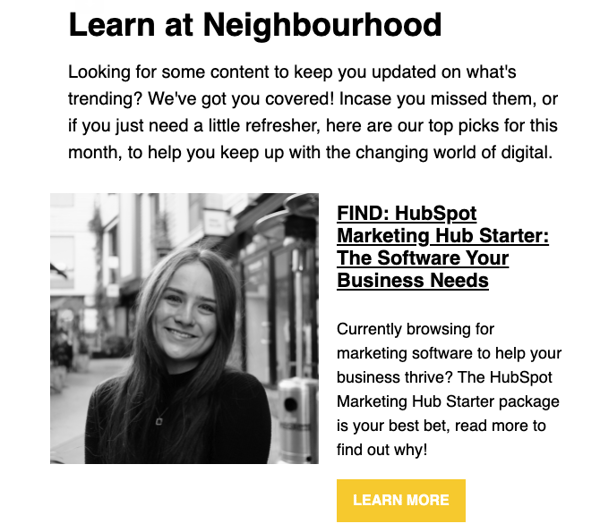
There’s also nothing stopping you from creating content around promoting your landing pages. For example, at Neighbourhood we use a range of blog articles, emails, and social media posts that discuss the problem our buyer personas face, before providing a link to our landing pages that provides the solution to their problem. If you really want to drive traffic to your landing pages paid advertising is a sure thing to get increased traffic faster.
3 Digital Lead Generation Mistakes You Must Avoid
There’s a reason why lead generation is a hard thing to get right… because it can be hard. Lead generation is hard and requires constant attention and updating. But instead of being scared by this, keep in mind the following mistakes that are often the reason why your lead generation strategy isn't working.
#1 They Don’t Provide Enough Value
We’ve said it before, and we’ll say it again. There needs to be a value exchange between your lead magnet, and your prospects. You need to provide genuine value….but what does that actually mean?
Basically, it means understanding your buyer personas needs and pain points, before providing a solution. Value can come in the forms of:
- Content should be a comprehensive resource on the topic.
- Templates should look professional and be easy to use.
- Software should have the features necessary to get the desired results.
Ideally, when you create a lead magnet, you want it to be something that you could charge money for. It has to be that good.
#2 They Don't Sell Their Lead Magnet Enough
It doesn’t matter how great your lead magnet is, if you don’t make an effort to sell it to your target audience, it won’t help you much with lead generation.
Selling a freebie may sound like an oxymoron, but if you want people to download whatever it is that you offer, you need to persuade them to do it. Remember not to be pushy, but to sell to them with a human touch - in an inbound way.
Treat your landing page the same way you would treat a sales page because that’s exactly what it is.
#3 Their Marketing Is Inconsistent
Inconsistency makes it confusing for prospects at every stage in the buyer's journey. It’s important to make sure the following are consistent:
- Your lead magnet.
- Your lead magnet landing page.
- Your lead magnet marketing.
For example, going from your Facebook ad to your landing page to your lead magnet should be a seamless experience. What does that mean?
It means that branding (colours, logos), the tone of voice, and the offer needs to remain the same.
Otherwise, the person who clicked on the ad might dislike the landing page and leave without giving you their email address.
Or they might like the landing page, download the freebie, then dislike it and feel disappointed (or even cheated!).
The money you spent to get them to click that ad is now wasted because they are not going to buy from you.
Also, 49% of consumers have shared an experience they had with a company on social media, good or bad.
This means that a negative interaction with a potential customer can cost you a lot more than just the ad click. It can damage your reputation if they decide to vent on social media.
That is why you need to make sure that the entire lead generation process provides a consistent experience for the potential customer.
And, of course, you need to deliver on what you promised.
Okay, So You Generated a Lead, What's Next?
Obviously, you don’t just want leads, you want paying customers. So how can you convert the former into the latter?
You do it through a little something called lead nurturing:
- Continue to provide value with content that helps them solve their problems.
- Use marketing automation software to tailor that content to their needs based on where they are in the buyer’s journey.
- Share social proof such as case studies and interviews with existing customers who have succeeded with your product.
Finally, convert them into paying customers by presenting your sales pitch when they seem ready to take the next step.
You may want to analyse the data of existing customers to see under what conditions they converted, then use those insights to automatically present your offer to people when they are most likely to buy.
Leads are the lifeblood of your business. They keep your wheels turning, functioning, and more importantly - keep your business alive! It’s so essential to create a system for lead generation and luckily, with digital marketing, it's easy to get started. You can first create a lead magnet, then create a landing page for that lead magnet, and before finally driving traffic to said landing page.
Just remember that while it is easy to get started, it's a bit harder to be successful. If there’s one thing you take from this article is that you must understand your buyer persona in order to create lead magnets that provide genuine value to your target audience, and if your lead generation strategy is still not working - it’s time to spruce things up a little. Perhaps you need to reassess your buyer persona, or get more enticing bait. One things for certain, if you keep trying and reassessing you need to remain positive and optimistic because eventually you’ll hit the nail on the head, and before you know it, you’ll never return home from a day at sea empty handed.

